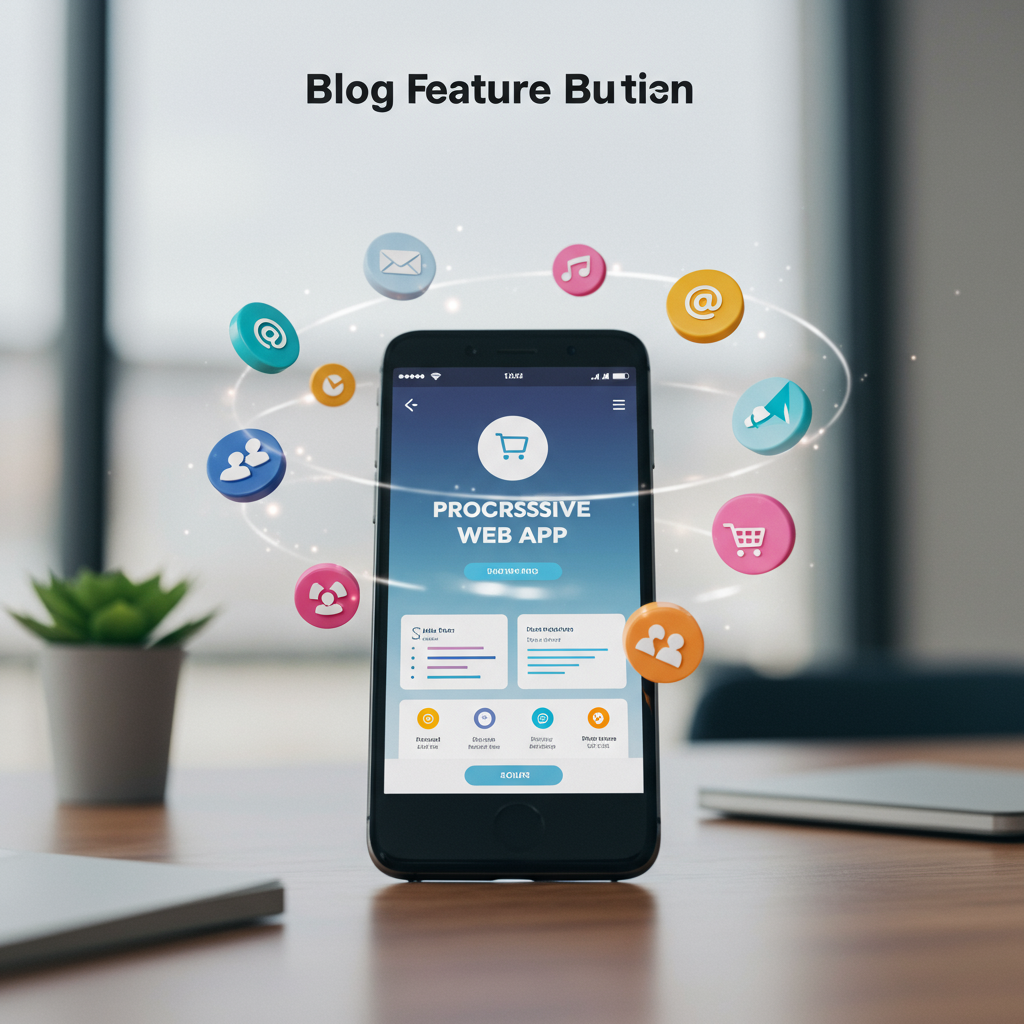Progressive Web Apps: The Game-Changer in Mobile Marketing

As mobile devices become the primary gateway to digital experiences, businesses are under pressure to deliver fast, engaging, and reliable web interactions. Progressive Web Apps (PWAs) have emerged as a breakthrough solution that combines the reach of the web with the performance of native apps.
What Are Progressive Web Apps?

Progressive Web Apps are web applications that use modern web capabilities to deliver an app-like experience directly in the browser. Unlike traditional websites, PWAs load instantly, work offline or on low-quality networks, and provide engaging features such as push notifications and home screen installation. Key technologies powering PWAs include service workers, web app manifests, and HTTPS security. By leveraging these standards, PWAs offer a seamless, reliable experience across devices without requiring users to download from an app store. Learn more about Benefits of Mobile Marketing.
Why PWAs Matter for Mobile Marketing
In a landscape where user attention spans are shrinking, page speed and reliability are critical. Studies show that a one-second delay in load time can lead to a 7% reduction in conversions. PWAs address this challenge by caching content locally and delivering instant page loads. Moreover, push notifications enable timely re-engagement, driving repeat visits and loyalty. For marketers, PWAs also offer improved SEO potential compared to native apps, since content is indexable by search engines. Ultimately, PWAs bridge the gap between web and app, creating new opportunities for customer engagement and conversion optimization.
Key Benefits of PWAs for Marketers
- Instant Loading: With service workers caching key resources, PWAs load near-instantly, reducing bounce rates and enhancing user satisfaction.
- Offline Functionality: Users can browse content and perform actions even without a stable internet connection, supporting on-the-go engagement.
- Push Notifications: Re-engage users with targeted messages, promotions, and updates, boosting retention and average session duration.
- Add-to-Home-Screen: Encourage users to install the web app on their device, increasing brand visibility and repeat visits without app store friction.
- SEO Advantages: Indexable content and fast load times improve search rankings, driving organic mobile traffic.
- Cost Efficiency: Develop and maintain a single codebase for web and app experiences, reducing development overhead.
Enhancing User Engagement with PWA Features
Beyond core performance gains, PWAs offer features that align with modern marketing tactics. Push notifications can be segmented by user behavior, enabling personalized offers and reminders. Geolocation APIs allow context-aware messaging, such as local promotions or in-store navigation. Background sync ensures that user actions—like adding items to a cart—are completed once connectivity is restored. These capabilities help marketers craft cohesive, relevant experiences that foster loyalty and increase lifetime value.
Implementing PWAs in Your Mobile Marketing Strategy
Integrating a PWA begins with an audit of your current mobile website. Identify performance bottlenecks, broken links, and high-exit pages. Next, select a PWA framework or library—popular options include Workbox, Angular PWA, and Ionic. Key implementation steps include:
- Configure HTTPS: Ensure all assets are served over secure connections to enable service worker registration.
- Register a Service Worker: Build caching rules and offline logic to manage resource requests and background sync.
- Create a Web App Manifest: Define icons, theme colors, and display modes, facilitating the add-to-home-screen prompt.
- Optimize for Performance: Minify assets, leverage lazy loading, and apply responsive design best practices.
- Implement Push Notifications: Integrate a push service (Firebase Cloud Messaging or similar) and configure personalized messaging workflows.
- Test Thoroughly: Use Lighthouse, WebPageTest, and real-device testing to validate performance, accessibility, and PWA compliance.
Best Practices for PWA-Based Mobile Marketing
- Personalize Notifications: Segment users by behavior, location, and preferences to deliver relevant content.
- Design for Engagement: Use clear CTAs, compelling visuals, and intuitive navigation to guide user journeys.
- Monitor Analytics: Track PWA-specific metrics like service worker registration rate, offline interactions, and prompt acceptance rates.
- A/B Test Features: Experiment with different push copy, add-to-home-screen triggers, and caching strategies to optimize results.
- Maintain Accessibility: Ensure your PWA meets WCAG standards for inclusive experiences across all audiences.
Real-World Case Studies
Leading brands across retail, media, and travel have harnessed PWAs to drive mobile growth. For example, a global retailer reduced load times by 50% and saw a 30% increase in conversion rates after launching a PWA. A news publisher doubled reader engagement by delivering push notifications for breaking stories and enabling offline reading. In travel, a booking platform decreased abandonment in low-connectivity regions by offering offline search and booking capabilities. These success stories demonstrate the tangible ROI of PWA adoption in diverse industries.
Overcoming Common Challenges
While PWAs offer numerous benefits, teams may encounter obstacles such as browser compatibility, push notification opt-in rates, and caching complexity. To address these issues:
- Polyfill Support: Use libraries to enable PWA features in older browsers.
- Opt-In Incentives: Educate users on the value of enabling notifications or installing the app through in-app prompts and clear copy.
- Cache Strategy Audits: Regularly review service worker logic to prevent stale content and ensure seamless updates.
The Future of PWAs in Mobile Marketing

Looking ahead to 2025 and beyond, PWAs will integrate emerging technologies like artificial intelligence, augmented reality, and voice interfaces. Imagine a PWA that adapts content in real time based on AI-driven user profiles, or that presents AR-enabled product previews directly in the browser. Voice-activated navigation will further streamline user journeys. By staying at the forefront of these innovations, marketers can leverage PWAs to deliver hyper-personalized, immersive experiences that drive growth and brand differentiation.
Conclusion
Progressive Web Apps represent a powerful evolution in mobile marketing, offering the speed, reliability, and engagement of native apps alongside the global reach and SEO benefits of the web. By understanding key benefits, following best practices, and embracing future advancements, businesses can unlock new levels of performance and customer satisfaction in 2025. Start your PWA journey today to stay competitive in an increasingly mobile-first world.
Ready to transform your mobile marketing strategy with PWAs? Audit your site, choose the right tools, and watch engagement and conversions soar.





